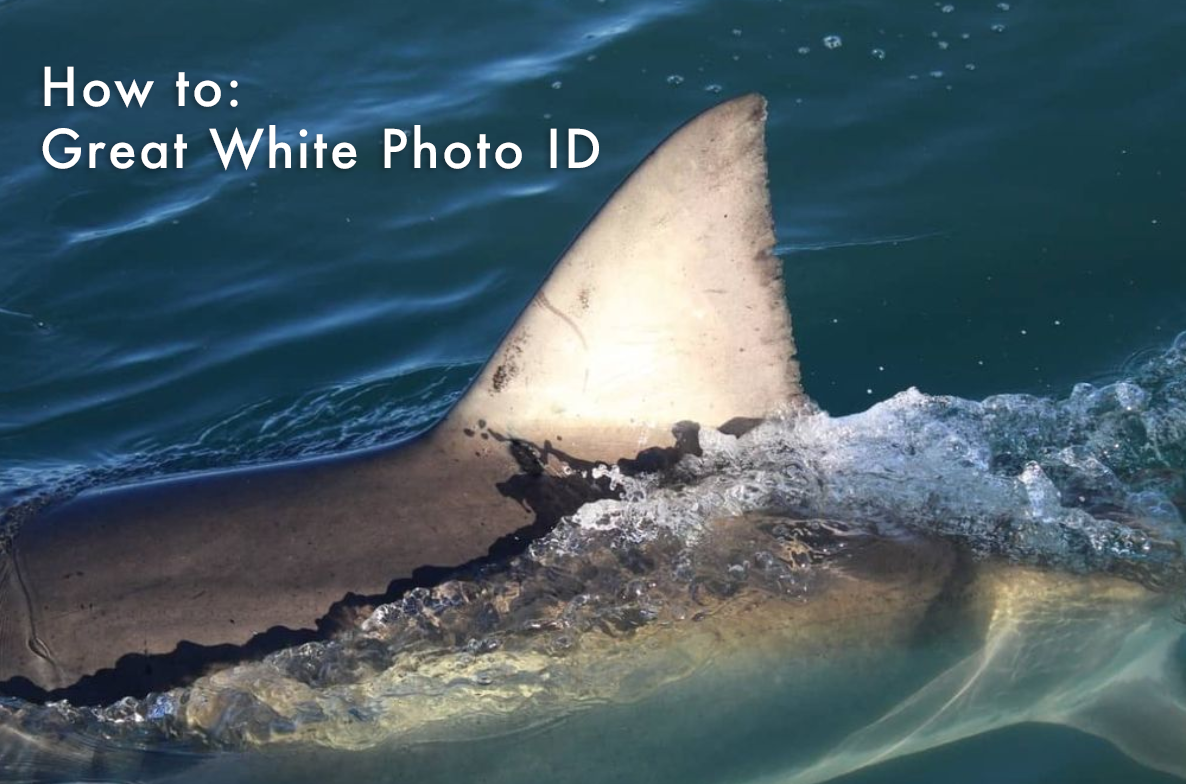
How to Photo ID a Great White Shark
Posted by Maria Geoly on March 16, 2023
Photographing dorsal fins of great white sharks helps contribute to population assessments.
Have you ever bought a species identification book or downloaded an app like iNaturalist? If the answer is yes, that means you are both a naturalist and participating in citizen science! Chances are, your photos and sighting records have helped either a population assessment or a spatial distribution study of at least one species. In the field of shark science, citizen science plays an important role in identifying individuals of a population. Much like the paparazzi trying to photograph elusive celebrities, endangered and vulnerable species such as great white sharks often have their own paparazzi of researchers and tourists taking photos of them. However, unlike celebrities, these sharks benefit from having their photo taken. In this blog we will explain how to identify great white sharks based on their dorsal fin and why photographing them is important.
Like the human fingerprint, every dorsal fin of a great white shark is unique. This uniqueness can change over a long period of time. Lucky for us researchers, this is also the easiest part of a great white to photograph. Great white sharks are frequently observed at or near the surface, especially during predation events, which makes for great photo opportunities. No extra equipment (or gumption) necessary. If the shark is perpendicular to you and the opportunity to take a fin ID photo presents itself, the most important thing is limiting motion blur. This can be done by making sure your shutter speed is double the length of your telephoto lens (when shooting with a DSLR or mirrorless camera), or making sure you are not shooting in Night Mode on a mobile phone. Limiting motion blur is important because the fine details of a white shark fin are what allows us to tell individuals apart.
So you’ve taken the photo, how do you identify the individual? The answer is by recognising the series of notches on the trailing edge! They may also have pieces of their fin missing, copepods (even though those change quite frequently) and black and white pigmentation.
Why is identifying great white sharks important? When you are able to identify individuals, you are able to “mark” them with an ID and recapture them through photographs time and time again. Once a recapture history of individuals is established, programs can run population models under many different hypotheses, which can allow for estimations of a population size, within a range, with a certain degree of confidence. Why is that important? If we can assess a population we can provide such a population with a conservation status and monitor its conservation trend in the years to come.
So, if you are lucky enough to see a dorsal fin pop out of the water, snap a photo and send it to your local researchers! Research and conservation is most successful with community help.